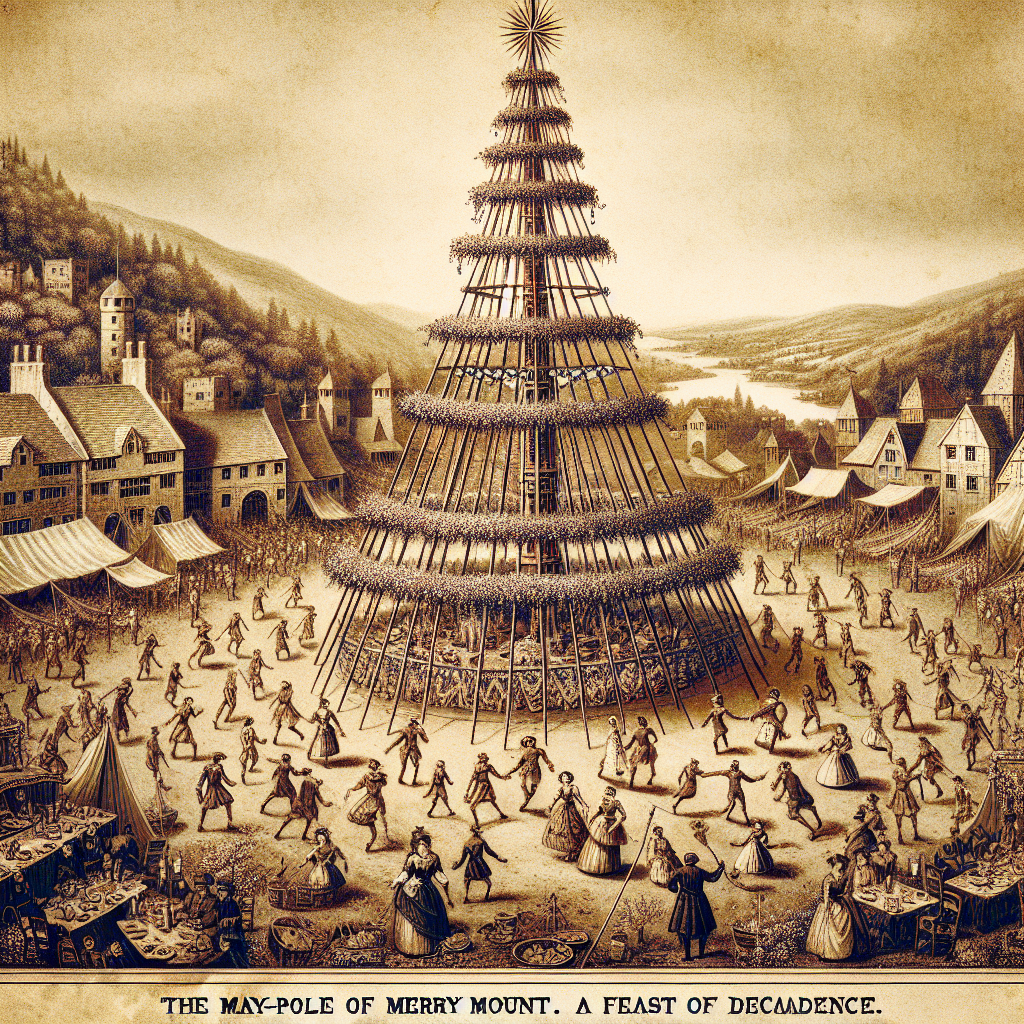The Festive Rebellion: Understanding 'The May-Pole of Merry Mount'
Exploring the Ecstasy and Dissonance of Nathaniel Hawthorne's Unique Tale
Imagine a world where joy and revelry reign supreme, where a community comes together to celebrate the most merry of occasions. This is precisely the stage set by Nathaniel Hawthorne in his enchanting story, "The May-Pole of Merry Mount." First published in the 1830s, the tale transports us to the busy world of colonial New England, specifically to a settlement known as Merry Mount, where revelers bask in their hedonistic celebrations around a towering May-Pole.
In Hawthorne's narrative, the setting springs to life with colorful characters who engage in vibrant festivities. At the heart of this tale is an examination of the tension between exuberant freedom and strict morality. The fun-loving colonists of Merry Mount are caught in a cultural crossfire with the stern, Puritan settlers who find their practices to be not just frivilous, but downright blasphemous. Hawthorne, an expert at dissecting the human condition, offers a lens through which we can explore the collision of joy and austerity, freedom and repression.
Celebration at Merry Mount
Merry Mount stands out in its historical context as a symbol of rebellion against Puritan austerity. Here, where celebrations know no restraint, Hawthorne paints a vivid picture of the liberties taken by a community unshackled by the rigid conventions that defined much of New England at the time. The May-Pole, central to the narrative, isn't merely a tall wooden pole decked with flowers; it is a beacon of happiness and a challenge to the Puritanical perspective.
As the merry-makers dance around their pole, with mirth and music filling the air, the tale builds an irresistible sense of community and freedom. Their liberated expressions and unchecked joys create a spectacle that almost feels secularly divine. In contrast to this burst of life stands the foreboding shadow of the Puritans, whose black-clad figures symbolize a world devoid of this effervescence.
The May-Pole: Symbolism Unfurled
Hawthorne weaves the May-Pole into his narrative as a multi-dimensional symbol. On one level, it is a literal object around which the festivities orbit. Yet, on a deeper level, it represents a broader ideological clash. The Puritans view this symbol of joy and pleasure with contempt, equating it with moral decay and spiritual undoing. In contrast, for the inhabitants of Merry Mount, the pole stands as a bastion of resistance against the oppression they fled from in pursuit of a freer, fuller life.
This symbolism is masterfully articulated through Hawthorne's portrayal of the revelers' interactions with the pole. Hawthorne imbues the scene with an almost dreamlike quality, emphasizing the timeless nature of the struggle between liberty and restriction, urging us to ponder: is there harmony to be found in this conflict?
Characters as Catalysts
Hawthorne populates Merry Mount with an array of characters, each representing the spectrum of human disposition and societal structures. The Lord and Lady of the May stand at the forefront, shining as the embodiment of youthful exuberance and carefree love. Their story within the story captures the essence of human desire for connection and happiness unhindered by societal norms.
Contrastingly, the Puritans' leader, Endicott, is portrayed as stern and somber, exuding authority steeped in religious piety. Through him, Hawthorne channels the Puritan ethos, which stands as an overarching force aiming to dismantle the infectious joy of Merry Mount. Endicott’s confrontation with the revelers is as much a personal battle as it is a metaphorical one, painting a complex picture of the human psyche intertwined with cultural and religious belief systems.
The Triumph of Unity
In the tapestry of Hawthorne's narrative, the climax unfolds with the seemingly inevitable encounter between the jubilant merry-makers and the staunch Puritans. Yet, Hawthorne, ever the master of nuance, shifts the narrative towards a resolution that encompasses more than pure conflict. The tale culminates in a poignant moment of human reconciliation, where the shared human experience triumphs over divisive ideologies.
This resolution encourages readers to see beyond binary oppositions, suggesting a harmony that might exist between divergent paths. Hawthorne's optimism shines through here, as he pushes us to consider a more interconnected and understanding humanity—where differences can coexist within a larger, richer framework.
The Relevance of Merry Mount Today
The story of Merry Mount, though situated in the 17th century, reverberates with truths pertinent to contemporary discussions about cultural and ideological diversity. It asks us to reflect on how we perceive those who live differently from us and challenges us to question the divisions we impose through fear or misunderstanding.
Hawthorne's allegory urges a reconsideration of our definitions of happiness and morality, as we navigate lives that are increasingly intertwined with the thematic aspects presented in his work. By stripping away the specifics, we find a work that speaks to the universal aspects of human nature—the search for joy and the structures that attempt to curtail or define it.
In "The May-Pole of Merry Mount," Nathaniel Hawthorne gifts us a timeless exploration rooted in historical fiction but unbound by time. His story calls us to celebrate not just the joy in our own lives, but the potential for unity across the diverse human landscape.

